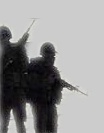 |

U.S. War on Iraq


Israeli-Palestinian

Venezuela's Rebellion

Attacks & Revenge
|
Review of Before and After: U.S. Foreign Policy and the Sept. 11 Crisis
 by Robert Jensen by Robert Jensen
February 2003
For more than a decade, Phyllis Bennis has been one of the most reliable left/progressive critics of U.S. foreign policy. From her post at the Institute for Policy Studies in Washington, D.C., she has been a tireless writer and speaker working with grassroots groups, at the same time as she has worked behind the scenes with U.N. officials and non-governmental agencies on insider efforts to affect policy.
After years of reading her work, the one (mild) criticism I have had of some of her writing is that it could sound too much like the insider world in which she was operating -- too diplomatic and, at times, even policy-wonkish.
I have no such criticism of Before & After: U.S. Foreign Policy and the September 11 Crisis (Olive Branch Press/Interlink. 2003. 246 pp. $17.95).
The book is an insightful assessment of recent U.S. foreign policy with a focus on the Middle East and Central Asia, rich with detail and clear analysis. But what struck me most about Before & After is its passion. Bennis' writing in this book is alive with a sense of outrage at the brutality of U.S. policy and the hypocrisy of policymakers, and a sense of solidarity with the victims of all the crimes committed by the powerful around the world. It is a book about the diplomatic world that isn't diplomatic, a book about foreign policy that isn't wonkish.
From the first page Bennis refuses to accept the hackneyed frameworks that guide so much of the conventional thinking about U.S. foreign policy. For example, she rejects the simplistic notion -- commonly expressed before 9/11 -- that the Bush administration had replaced the multilateralism of the Clinton administration with an isolationist foreign policy. First, she reminds us that Clinton's multilateralism was largely a sham, "far more committed to the appearance of leading a global coalition than to any real consultation, let alone power-sharing" (p. 1).
Then she points out that the fact that Bush in the campaign had expressed distaste for "nation-building" did not mean he intended to keep his hands off the rest of the world. The Bush administration was, from the start, not isolationist but interventionist in overtly unilateralist fashion, and nothing since 9/11 has changed that.
Bennis also refuses to fall into a similar trap of analyzing disputes within the Bush administration as a struggle between the so-called hawk and dove camps, personified by Secretary of Defense Donald Rumsfeld and Secretary of State Colin Powell, respectively. Bennis describes it instead as a difference between one group that prefers "a unilateral assertion of U.S. power, especially military power, as the first-choice option" and the other that opts for "a U.S.-dominated consensus, however artificial or coerced it might be, in whose name U.S. policies could be imposed on the world" (p. 5).
With the framework set in the first chapter, Bennis undertakes the daunting job of summarizing the history of the United States in the Middle East. She does a masterful job of making sense of that complex history in 60 pages in a chapter that is dense with facts and analysis but is a smooth read.
Bennis begins the chapter on Bush's response to 9/11 with an important distinction between the reactions of shock and surprise at the attack, which reminds us of most Americans' lack on interest in, and knowledge about, foreign affairs. "At the human level, the world was united in shock -- at the scale, the audacity, the cruelty of the attacks" (p. 83). But, as Bennis points out, only Americans were surprised, a surprise bred in ignorance. "For generations Americans believed themselves immune from any repercussions of their government's actions," she writes (p. 85). Given the support for a war on Iraq today, it's not clear that many Americans have learned that lesson from 9/11.
In her chapter detailing how Bush put together his "coalition of coercion," Bennis makes interesting comparisons between father and son. While many amateur psychologists today wonder if the junior Bush is intent on attacking Iraq to finish what dad started in the Gulf War, she focuses on policy, not personalities. "Both Presidents Bush used the actual international unity that existed on one issue -- condemnation of Iraq's invasion in 1990, of the September 11 terrorist attacks in 2001 -- to provide political cover for their imposed agreement on coerced coalitions in support of goals that went far beyond the original unified condemnation" (p. 109). Options besides war existed in both cases, but both Bushes seized the opportunity to make war and extend U.S. power.
Bennis' account of the U.S. war on Afghanistan captures the brutality of the conflict, the shameless propaganda of the Bush administration, and the sometimes surreal absurdity of it all. For example, under the heading "Eat your land mines, boys and girls," Bennis recounts the potentially disastrous effects of the U.S. military campaign on the flow of refugees and disruption of food aid. This prompted the Bush administration's food-drop program, which was at the time clearly a PR stunt and later was shown to have been almost totally ineffective. In one of the more absurd moments of the war, the U.S. military realized that the yellow food packages being dropped were similar in size and color to the unexploded bomblets left from cluster bombs. The chairman of the Joint Chiefs of Staff acknowledged this was unfortunate; Afghans "get used to running to yellow," he said. The ugly brutality of cluster bomb weapons and cynical public-relations maneuver actually increased the danger to Afghan civilians, and the military's only response was to change the color of the food packages.
Bennis dispenses with the basic war propaganda about U.S. motives quickly and clearly: "the war was never about bringing anyone to justice; it was about conquest and the mushrooming of U.S. global power, all in the name of righteous vengeance" (p. 163). Bennis' book helps us understand how the boys in Washington -- who base policy decisions on cold, calculated criteria about power and control -- manipulated the public's desire for vengeance. This point is crucial to the antiwar movement; many people argued after 9/11 that we should reject vengeance, implying that U.S. policy was being guided by such an emotion. As Bennis points out, the war was conducted in the name of righteous vengeance, but that had little to do with the war's purpose.
Bennis takes a chance at the end of the book by writing the speech she wishes Bush had delivered after 9/11. Such devices often turn maudlin, but in her hands it is effective, setting out a vision of policy based in a different set of values. No matter how far we are from those values as a society, her articulation of them provides an appropriate ending for a book that does not flinch from difficult truths yet remains realistically hopeful.
As with any book that covers this much contentious ground, I can find things to quibble with, most notably Bennis' basic orientation to the United Nations. After years of reporting on and working with that institution, Bennis clearly has more faith in it as a vehicle for progressive change than some of us do, and it can sometimes lead to differences in analysis.
For example, in a recent article Bennis called U.N. Security Council Resolution 1441, which restarted weapons inspections in Iraq this fall, a partial victory. She argues that the resolution "provides a powerful tool to fight for U.S. accountability to multilateralism and the U.N" while acknowledging that it also "reflects the heavy-handed domination of the U.N. and the rest of the world by the United States and ultimately sets the terms for war." I find it difficult to argue that the resolution was even a partial victory; if anything the U.N. fig-leaf -- won with no meaningful concessions by the United States -- makes it easier for Bush to attack with some vague pretense of U.N. cover, which only makes antiwar organizing more difficult.
But my differences with Bennis' analysis are relatively minor and don't obscure the fact that Before & After is one of the clearest dissections of U.S. policy and propaganda published since 9/11. It manages to be broad in scope without surrendering depth of analysis, written in a style that is broadly accessible. It is a book for people in the movement to study, and to use for outreach when organizing.
Like many left/progressive people, I first came to know Bennis' work during the first Bush attack on the people of Iraq in 1991, when she drew on her long experience covering the United Nations and the Middle East to help provide the analysis that was left out of the mainstream.
As we head toward the second Bush attack on Iraq, I struggle with a profound sadness that we find ourselves once again struggling to stop a slaughter that, as I write this, appears to be at the door. I am glad Phyllis Bennis is still with us to provide the analysis we need, but I cannot help but lament that, more than a decade later, we still need her.
Before and After: US Foreign Policy and the September 11th Crisis
-- by Phyllis Bennis, Noam Chomsky
Robert Jensen, an associate professor of journalism at the University of Texas at Austin, is the author of Writing Dissent: Taking Radical Ideas from the Margins to the Mainstream and a member of the Nowar Collective.
|







